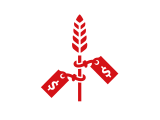Droughts and the Grain Export Ban in Russia
Conceptual Model
Climate context
In July 2010, Russia experienced a heat wave which witnessed summer temperatures peak at their highest level in 130 years. The ensuing drought and fires decimated the summer harvest, especially in Russia’s southwestern regions which produce the majority of the nation’s grain. As the third largest global exporter of wheat, Russia saw its grain output fall from 97 million tonnes in 2009 to an estimated 60 million tonnes in 2010 (Oxford Business Group, 2011).
Elena Skrynnik, the then minister for agriculture, suggested that 43 regions had been affected and 13.3 million acres of crops destroyed. This number equated to 17% of the total crop area, including roughly 25,000 farms (Welton, 2011). Although perceived at the time as a one-off event (NOAA PSL, 2010), these severe drought events have been increasing in frequency within the region, and a subsequent drought was experienced again in the summer of 2012 (Ukhova, 2013).
The Russian export ban
In response to the drought and escalating rise in grain prices, the Russian government introduced a temporary grain export ban on wheat, barley, rye and maize, as well as on wheat and rye flour in August 2010. Originally, the ban was to last until the end of December 2010; however this was extended to the end of June 2011 when the magnitude of the harvest loss became apparent (OECD, 2011). Essentially, the ban nullified pre-existing contracts that exporters had with foreign clients, further exempting them from liability on those contracts. This then allowed sellers to resell their grain at prices that were, in the short-term, higher than those in the existing contracts (Welton, 2011).
Impacts on Egypt and Pakistan
The ban on grain export had various short- and long-term consequences. Globally, the absence of Russian grain on the world market in 2010 and 2011 contributed towards a renewed increase in world grain prices (OECD, 2011).
The ban had immediate implications on Russia’s traditional wheat-trading partners in North Africa, forcing them to source alternative supplies. A predominant loser was Egypt, and the ban was in part responsible for inducing social unrest within the country. Egypt was hard hit by the wheat crisis, as the country is only 60% self-sufficient in this cereal grain, relying heavily on Russian supply for around 50% of its wheat imports. Prior to the crisis, Egypt was purchasing wheat at 183 USD per tonne from Russia. After the export ban, the General Authority for Supply Commodities (GASC) needed to pay around 280 USD per tonne to France and the United States on the global market. Former trade minister, Rachid Mohamed Rachid, estimated that the ban on Russian wheat imports cost Egypt an extra 696.8 million USD in 2010 (Oxford Business Group, 2011).
Another country severely affected by the ban was Pakistan, Russia’s fourth biggest global customer, but also one of its poorest. Pakistan witnessed a 16% increase in the price of wheat, just as the government was reducing food price protections. According to the World Bank, the knock-on effect from the ban was a 1.6% increase in poverty at the time (Welton, 2011).
Long-term impacts
In terms of longer-term impacts, the grain export ban has arguably created a climate where price spikes and uncertainty are far more likely in the future. Indeed, if grain importers sense small interruptions in supply to be met with protectionism by the exporters, they will most probably increase demand when facing supplier issues. In turn, this exacerbates the problem.
Reputational costs are another longer-term impact to Russia as a reliable partner. Reputational costs may negatively affect grain demand in the future, thus hindering the ability of exporters to engage in forward pricing (Welton, 2011).
Resources and Materials
- NOAA PSL (2010). Ongoing Scientific Assessment of the 2010 Western Russia Heatwave. Preliminary Draft Report.
- OECD (2011). Agricultural Policy Monitoring and Evaluation 2011: OECD Countries and Emerging Economies. OECD Publishing.
- Oxford Business Group (2011). The Report: Egypt 2011.
- Ukhova, D. (2013). After the Drought: The 2012 drought, Russian farmers, and the challenges of adapting to extreme weather events. Oxfam Case Study. Oxford: Oxfam GB.
- Welton, G. (2011). The Impact of Russia’s 2010 Grain Export Ban. Oxfam Research Reports. Oxford: Oxfam GB.

